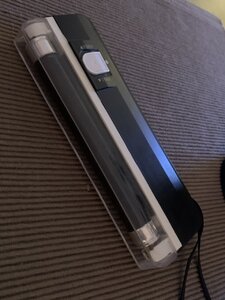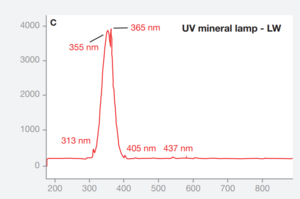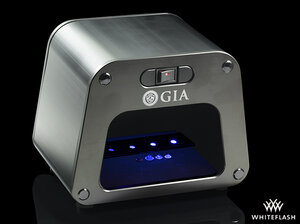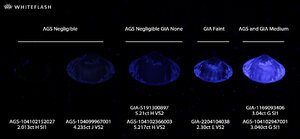- Joined
- Apr 3, 2004
- Messages
- 33,852
Interesting. I didn’t know that. I just ordered a pair of AGS studs that said negligible. I’m totally ok if it has it tho. I will test with my blacklight when they come in.
Nope. I don't even remember if my ACA has negligible fluor!
Bryan- you're giving useful information right here. Yet you continue to link to the article on your website which then links to a debunked study and uses conclusions we know to be erroneous.
It's just plain wrong and a disservice to the readers.
Yes, I have tested on three of my AGS negligible diamonds.
One of the three was faint/medium.
And it was the less attractive one.
People looking at diamonds in their office won't notice it.
Under strong spot lighting, it becomes more evident.
IMHO, fluorescence affects transparency/fire/the material.
The cheap black light (around 400nm) will usually cause way stronger fluorescence than the 365nm that Bryan Texus WF uses. I feel GIA is now using 385nm but on older certs they would definitely have been using 365nm.I’d appreciate recommendations for a good (but not crazy-expensive) blacklight light to test with ... like a penlight style. I have a cheap-y black light tube I bought a few years ago, but I think it’s about reached the end of it’s useful life. Any suggestions?
I think I am now at or close to being able to identify all diamonds with transparency issues from reports and 385nm photos which some suppliers are now using.
I am hoping someone we know might share or publish something that was presented at the Montenegro Mediterranean Gem Conference 2018 that states that there are no fluorescence transparency issues.Please elaborate.
Do you need the 385nm photos with the report, or can you do it with a report only?
Whitish blue is a dead give away
My own thoughts are surface graining, whisps and clouds would contribute to.tramsparency issues. No science to back it up, just a gut feel.
I think you are warm.

Looks like a relatively short wave mercury vapour UV lamp.@Garry H (Cut Nut) I don’t know what strength the one I have is; the bulb has “BLB-T5/4W” printed on it ... that is all I know.


I’d appreciate recommendations for a good (but not crazy-expensive) blacklight light to test with ... like a penlight style. I have a cheap-y black light tube I bought a few years ago, but I think it’s about reached the end of it’s useful life. Any suggestions?
We use an official GIA cabinet for our analysis:The cheap black light (around 400nm) will usually cause way stronger fluorescence than the 365nm that Bryan Texus WF uses. I feel GIA is now using 385nm but on older certs they would definitely have been using 365nm.


I am hoping someone we know might share or publish something that was presented at the Montenegro Mediterranean Gem Conference 2018 that states that there are no fluorescence transparency issues.


The only system I know of is what Sergey and OctoNus developed using 385nm LED Bryan and is part of the DiBox2 system.Garry,
With regard to using photos of fluorescence as aid to diagnosing transparency remotely, it will be highly unreliable as the both the strength and color observed will be greatly affected by camera settings. Here is a good illustration of the problem. Both images are of the same set of diamonds in the same UV cabinet, but taken at different exposures. Notice how 'white' the stones are with the greater aperture.
